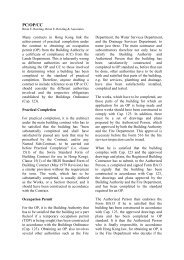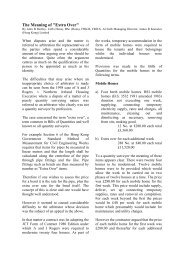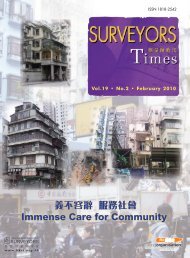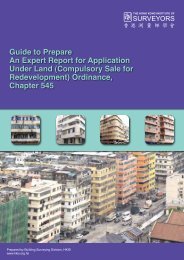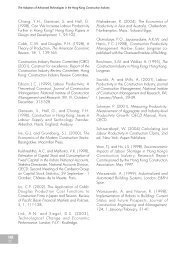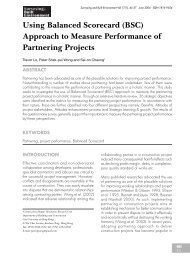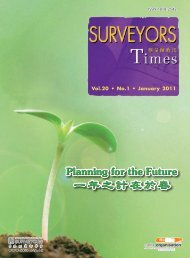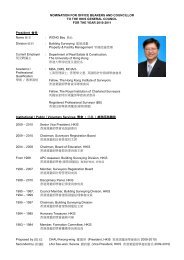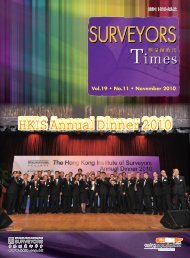Surveying & Built Environment Vol. 22 Issue 1 (December 2012)
Surveying & Built Environment Vol. 22 Issue 1 (December 2012)
Surveying & Built Environment Vol. 22 Issue 1 (December 2012)
Create successful ePaper yourself
Turn your PDF publications into a flip-book with our unique Google optimized e-Paper software.
SBE<br />
8<br />
A Note on British Blockhouses in<br />
Hong Kong<br />
Rob Weir*<br />
ABSTRACT<br />
Hitherto unreported in the literature, a line of blockhouses 1 , which is best<br />
remembered as the “Anderson Line” after its brain child Major General Charles<br />
Anderson, were built along Kowloon Range in the early part of the last century,<br />
which might well be the predecessor of the Gin Drinker’s Line (Kwong <strong>2012</strong>, this<br />
issue), now surveyed (Lai, Tan, Davies, and et al 2009, Lai, Tan, Ching and Davies<br />
2011, last issue).<br />
This technical note, as part of a large project 2 , provides in this context some<br />
background information on construction in colonial Hong Kong of the first, c.1911<br />
line of 30 blockhouses, their design details, the weaponry they were defended by<br />
and their actual positions.<br />
* Retired Cathay Pacific flight engineer. Email: pillbox@bigpond.com<br />
1 Blockhouses were defined in Section 17, Blockhouses, Field Defences, Pt 1, Manual of Military<br />
Engineering, page 107, in the Manual of Military Engineering of 1894 seen by the author at the Royal<br />
Engineers Museum, Chatham, as being:<br />
“Blockhouses are defensible guard-houses or barracks, having framed or stockaded walls and<br />
roofs formed of timber, or iron rails, with earth on top. Being easily destroyed by artillery, they<br />
are chiefly suited to mountain warfare in wooded country, where it is not always easy to bring<br />
artillery to bear upon them; and where the artillery itself is of inferior power.” (School of Military<br />
Engineering 1894, p. 107)<br />
2 Editors’ note: The author is an Australian who lived and worked in Hong Kong for 15 years. Now<br />
retired and living in Melbourne he has been researching the locations of batteries, shelters, pillboxes,<br />
and blockhouses in Hong Kong for more than 20 years and in communication with Tim Ko and Y K Tan<br />
on matters relating to these matters. He visits Hong Kong on a regular basis for site visits and archival<br />
research. He became interested in HK military history as a result of finding many unexplained ruins<br />
during hill walks, and discovering there were few sources of information easily available.




